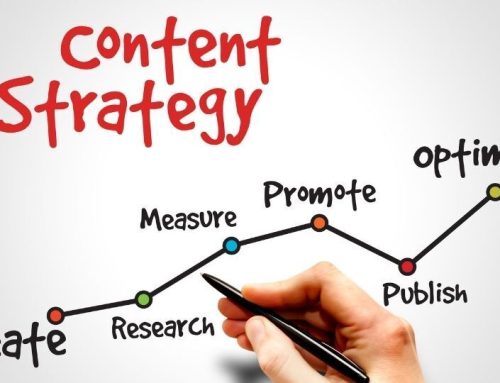Why Data‑Driven Content Marketing is Essential for Modern Businesses
In today’s highly competitive digital market, Data‑Driven Content Marketing has become a non‑negotiable component of any successful marketing strategy. The days of creating content based on hunches or outdated assumptions are gone. Audiences are savvier, competition is fiercer, and algorithms demand relevance. If your content strategy isn’t anchored in reliable data, you risk wasting time, resources, and opportunities.
Data‑Driven Content Marketing empowers brands to make informed decisions at every stage of the content lifecycle—from ideation and creation to distribution, optimisation, and performance measurement. By tapping into analytics platforms, SEO tools, CRM insights, and real‑time audience behaviour, marketers can produce content that resonates deeply with the target audience, drives meaningful engagement, and supports broader business objectives.
At its core, Data‑Driven Content Marketing ensures that every content asset is created with purpose and precision. It aligns content output with what audiences are actually searching for, what influences their buying decisions, and how they interact with different types of media. More importantly, it provides the metrics needed to prove ROI and continuously improve content performance.
In this comprehensive blog from Smart Digitants, we’ll share 10 essential tips that will help you harness the full power of Data‑Driven Content Marketing. Whether you’re refining an existing strategy or starting from scratch, these proven techniques will enable you to make data your competitive edge.
1. Start with Clear, Data‑Driven Objectives

Before diving into analytics, set measurable objectives tied to your business goals. Whether you’re aiming to boost website traffic, generate leads, or improve brand awareness, each objective should be SMART:
- Specific: Define exact outcomes (e.g., increase organic blog traffic by 20% in six months).
- Measurable: Ensure you can track progress via analytics tools.
- Achievable: Set realistic but challenging targets.
- Relevant: Align objectives with broader marketing goals.
- Time-bound: Assign a clear deadline.
By basing goals on existing performance data—such as baseline traffic, engagement rates, or conversion metrics—you ensure your objectives are realistic and relevant.
2. Know Your Audience Through Data Insights

Effective Data‑Driven Content Marketing starts with understanding your audience. Go beyond demographics—use data to uncover behaviours, preferences, and needs:
- Web Analytics (Google Analytics 4, Adobe Analytics): Identify pages with high engagement, traffic sources, bounce rates, and user flows.
- CRM Data: Analyse past purchase behaviour and customer interactions.
- Social Listening Tools (Brandwatch, Talkwalker): Understand sentiment and trending topics.
- Surveys & Feedback Forms: Collect qualitative insights directly from your audience.
Build detailed buyer personas that are continuously refined through data analysis. This allows your content to resonate more deeply, driving engagement and conversions.
3. Use the Right Tools for Data‑Driven Content Marketing

To truly embrace Data‑Driven Content Marketing, invest in the right technology stack. The right tools not only collect data but also help you interpret it and apply actionable insights.
Here are essential categories:
- Analytics Platforms: Google Analytics 4, Adobe Analytics
- SEO & Keyword Tools: SEMrush, Ahrefs, Moz
- Content Performance & Optimisation: BuzzSumo, MarketMuse, Clearscope
- Social Media Analytics: Sprout Social, Hootsuite Analytics
- CRM & Marketing Automation: HubSpot, Salesforce, Marketo
Integrating these tools into a cohesive system ensures seamless data flow, making it easier to analyse trends, track content performance, and fine‑tune strategies.
4. Conduct Comprehensive Keyword Research

Keyword research is at the heart of Data‑Driven Content Marketing. It ensures your content targets what your audience is actually searching for and stays competitive in SERPs.
Steps to conduct effective keyword research:
- Start with Seed Keywords: Brainstorm primary topics relevant to your brand and audience.
- Expand Using Tools: Use Ahrefs, SEMrush, or Google Keyword Planner to uncover related terms and long‑tail keywords.
- Analyse Search Intent: Understand whether users are looking for information, comparison, or purchase—align your content accordingly.
- Evaluate Competition: Identify content gaps by analysing top‑ranking pages.
- Track Keyword Trends: Stay updated with seasonal trends and shifting user interests.
Consistently updated keyword strategies keep your content relevant and ensure steady organic growth.
5. Create Content Based on Data, Not Assumptions

One of the most common mistakes marketers make is relying on gut instinct or legacy thinking when producing content. In a fast‑moving digital world, where audience needs and market dynamics evolve rapidly, this approach is no longer effective. Data‑Driven Content Marketing provides the antidote by enabling brands to build their content strategies on verified insights rather than assumptions.
When you adopt a Data‑Driven Content Marketing mindset, every decision—whether it’s the choice of topic, format, timing, or channel—is informed by hard data. This ensures that your content is optimised for what your audience actually wants, rather than what you think they want. Here’s how to make this approach work:
Leverage Search Data to Identify High‑Demand Topics
Keyword research tools like Ahrefs, SEMrush, and Google Keyword Planner are indispensable in Data‑Driven Content Marketing. They reveal not only what people are searching for but also the volume, competitiveness, and trends behind those queries. This data allows you to prioritise topics that have proven demand, ensuring that your content efforts target areas of real opportunity.
Analyse Audience Behaviour Across Digital Touchpoints
Web analytics platforms such as Google Analytics 4 provide deep insights into how your audience interacts with your content. By tracking metrics like time on page, bounce rates, click paths, and conversion funnels, you can determine what content types, topics, and formats resonate most. Data‑Driven Content Marketing means using these behavioural insights to double down on what works and improve or retire what doesn’t.
Utilise Social Listening and Trend Analysis
Social media channels are goldmines of audience insights—if you know where to look. Data‑Driven Content Marketing involves monitoring conversations, hashtags, and emerging trends using tools like Brandwatch, Sprout Social, or Talkwalker. This helps you identify new content opportunities and adjust your messaging to align with current audience interests and sentiment.
Conduct Competitor and Market Gap Analysis
A thorough competitive analysis is another cornerstone of Data‑Driven Content Marketing. By studying the content landscape of your industry, you can pinpoint gaps where audience needs are not being fully addressed. You can also analyse what types of content are helping competitors rank highly and attract engagement—allowing you to refine your approach accordingly.
Gather Direct Audience Feedback
Never underestimate the value of qualitative insights. Data‑Driven Content Marketing also includes leveraging direct audience feedback through surveys, user interviews, customer reviews, and comment analysis. These insights often reveal pain points, objections, and preferences that might not surface through quantitative data alone.
6. Implement Continuous A/B Testing

One of the greatest advantages of Data‑Driven Content Marketing is the ability to constantly test, learn, and improve. While many marketers focus only on content creation, those who succeed in today’s digital ecosystem understand that the ongoing optimisation of content is just as important. At the heart of this process is continuous A/B testing—a core technique in any effective Data‑Driven Content Marketing strategy.
What is A/B Testing in Data‑Driven Content Marketing?
A/B testing, also known as split testing, involves comparing two versions of a single element—such as a headline, CTA, image, or even an entire landing page—to determine which performs better based on real user data. By running controlled experiments and tracking key performance indicators (KPIs), marketers can make informed decisions about how to refine their content for maximum impact.
In the context of Data‑Driven Content Marketing, A/B testing allows you to systematically improve content performance, conversion rates, and user experience. Rather than relying on subjective judgement or “best practices” alone, you use empirical evidence to guide every optimisation.
What Elements Should You Test?
Effective Data‑Driven Content Marketing involves testing a wide range of elements across different content formats and touchpoints:
- Headlines and Titles: Experiment with different wording, lengths, and emotional tones to see which titles drive the highest click‑through rates (CTR).
- CTAs (Calls to Action): Test variations in CTA copy, button design, placement, and colour to increase conversions.
- Visual Elements: Compare different images, videos, or infographics to gauge their impact on engagement.
- Content Length and Structure: Test long‑form versus short‑form content, paragraph spacing, bullet points, and use of subheadings.
- Email Subject Lines: Optimise open rates and click‑throughs by testing different subject line approaches.
- Publishing Times and Frequency: Identify the optimal times of day or week for publishing and distributing content.
Best Practices for Continuous Testing in Data‑Driven Content Marketing
To get the most out of A/B testing, follow these best practices:
- Test One Variable at a Time
Focus your tests on a single variable to ensure clarity in your results. For example, if you test both the headline and CTA at the same time, you won’t know which change caused the performance difference. - Run Tests for an Appropriate Duration
Allow enough time for your tests to gather statistically significant data, especially if your content sees seasonal or fluctuating traffic. - Use the Right Tools
Leverage platforms such as Google Optimize, Optimizely, Unbounce, or HubSpot for robust testing and reporting. - Document Results and Apply Learnings
Maintain a testing log that tracks what was tested, what results were observed, and how those insights will inform future content iterations. - Integrate Testing Into Your Workflow
Make A/B testing a continuous practice—not just an occasional exercise. Data‑Driven Content Marketing thrives when optimisation is baked into your entire content production process.
The Impact of Continuous A/B Testing
When applied consistently, A/B testing leads to:
- Higher engagement rates
- Increased conversions and sales
- Improved user experience
- Stronger SEO performance (through lower bounce rates and higher dwell time)
- More effective content investment, as you learn exactly what works for your audience
Ultimately, A/B testing helps turn Data‑Driven Content Marketing from a reactive activity into a proactive engine of growth—where each round of testing brings new insights and improvements.
7. Track the Right KPIs and Metrics

Without tracking the right KPIs, Data‑Driven Content Marketing cannot deliver its full potential. It’s critical to align your metrics with business goals—not just vanity stats.
Key KPIs to monitor:
- Traffic Metrics: Unique visitors, page views, traffic sources
- Engagement Metrics: Time on page, bounce rate, scroll depth, social shares
- Conversion Metrics: Lead generation, downloads, purchases
- SEO Metrics: Keyword rankings, organic visibility, domain authority
- Content ROI: Cost per acquisition (CPA), customer lifetime value (CLV), revenue per content piece
Use dashboards (e.g., Google Looker Studio) to centralise insights and track progress over time.
8. Refine Content Through Data‑Led Optimisation

Content should not be static. Data‑Driven Content Marketing involves ongoing refinement based on performance insights.
Here’s how to optimise effectively:
- Content Updates: Refresh older posts with new data, improved keywords, and updated links.
- SEO Optimisation: Adjust on‑page SEO elements (titles, meta descriptions, internal links) based on ranking performance.
- UX Improvements: Use heatmaps and session recordings to enhance readability and navigation.
- Content Pruning: Remove or consolidate underperforming content to boost overall site authority.
- Internal Linking: Strengthen content clusters by strategically linking related pieces.
Make optimisation a regular part of your content lifecycle—not an afterthought.
9. Align Content with the Customer Journey

Data‑Driven Content Marketing should map directly to your audience’s journey—from awareness to consideration to decision.
Steps to align content:
- Awareness Stage: Create informative blog posts, guides, and educational videos targeting early‑stage queries.
- Consideration Stage: Produce comparison content, case studies, and expert insights to aid evaluation.
- Decision Stage: Develop conversion‑focused landing pages, testimonials, and product demos.
- Post‑Purchase: Offer support content, onboarding materials, and loyalty programmes to drive retention.
Use data from CRM systems, behavioural analytics, and sales feedback to refine content at each stage.
10. Foster a Culture of Data‑Driven Content Marketing

For sustained success, Data‑Driven Content Marketing must be embedded in your team’s culture—not just an isolated tactic.
How to build this culture:
- Educate Teams: Provide regular training on data literacy and analytics tools.
- Encourage Curiosity: Motivate content creators to explore data and ask the right questions.
- Share Insights: Make data dashboards accessible to all stakeholders.
- Collaborate Cross‑Functionally: Align content, SEO, UX, and sales teams around shared data insights.
- Reward Data‑Driven Wins: Celebrate improvements in KPIs linked to content initiatives.
When your team values data as a core driver of content success, innovation and performance naturally follow.
Frequently Asked Questions
What is Data‑Driven Content Marketing?
Data‑Driven Content Marketing is an approach that uses data insights—collected from various analytics tools and platforms—to guide every aspect of content strategy. This includes deciding what content to create, how to distribute it, when to publish, and how to optimise performance. The core goal is to create content that better serves audience needs while achieving measurable business outcomes. Such can be achieved by using techniques like SEM and Content marketing together through a data driven approach.
Why is Data‑Driven Content Marketing important?
Data‑Driven Content Marketing removes guesswork from the content creation process. By using data to inform decisions, businesses can:
- Produce content that genuinely resonates with target audiences
- Learn how to increase ROI by focusing on high‑impact content
- Continuously optimise for better performance
- Align content with the full customer journey
- Build a more agile and effective marketing team
What tools are best for Data‑Driven Content Marketing?
There is no single tool that handles everything. The most effective Data‑Driven Content Marketing strategies use a combination of platforms:
- Google Analytics 4 for user behaviour and traffic trends
- SEMrush or Ahrefs for keyword insights
- BuzzSumo for content trend analysis
- Hotjar or Microsoft Clarity for user experience (UX) data
- HubSpot for CRM and lead tracking
- Looker Studio for creating performance dashboards
How often should you review your Data‑Driven Content Marketing strategy?
Data‑Driven Content Marketing is not a one‑time exercise. It should be a continuous process. We recommend:
- Monthly reviews of key content metrics
- Quarterly reviews of audience data and keyword trends
- Annual strategy sessions to realign with business objectives and market changes
How do you measure the ROI of Data‑Driven Content Marketing?
To evaluate the ROI of Data‑Driven Content Marketing, track metrics tied directly to business outcomes:
- Conversion rates from content
- Leads generated from content
- Sales influenced by content
- Customer acquisition costs
- Lifetime value of content‑acquired customers
- Organic traffic growth
- Engagement improvements (time on page, shares, comments)
By linking content performance to revenue and profit metrics, marketers can accurately measure ROI.
What are common mistakes to avoid in Data‑Driven Content Marketing?
Common pitfalls in Data‑Driven Content Marketing include:
- Focusing on vanity metrics: High traffic without conversions is not success.
- Ignoring audience intent: Content must match what users want at each stage.
- Under‑investing in optimisation: Content should be refined continually—not left static.
- Failing to align with business goals: Always connect content efforts to measurable business outcomes.
- Overloading on tools without clear strategy: Use tools purposefully to avoid data overwhelm.
How can small businesses use Data‑Driven Content Marketing effectively?
Even with limited resources, small businesses can succeed at Data‑Driven Content Marketing by:
- Focusing on key metrics that drive revenue
- Using affordable or free tools (Google Analytics, Google Search Console, Ubersuggest)
- Regularly optimising existing content
- Concentrating on topics with proven demand and audience interest
- Prioritising quality over quantity in content creation
Does Data‑Driven Content Marketing help with SEO?
Absolutely. Data‑Driven Content Marketing is essential for effective SEO because:
- Keyword research guides optimisation
- Analytics reveal which topics resonate
- Engagement data helps refine UX and reduce bounce rates
- Backlink analysis shows opportunities for authority building
- Data‑driven content clusters support better internal linking and SEO architecture
In short, Data‑Driven Content Marketing helps create content that both users and search engines love.
How long does it take to see results from Data‑Driven Content Marketing?
Results from Data‑Driven Content Marketing depend on your starting point, industry competition, and how effectively you apply data insights. Typically:
- Initial improvements (traffic, engagement) appear in 3–6 months
- Significant gains in lead generation and ROI may take 6–12 months
- Long‑term brand authority builds steadily over 12–24 months
Consistency and commitment to data‑driven processes are key to sustained success.
Ready to Elevate Your Data‑Driven Content Marketing?
If you’re serious about improving your content strategy, now is the time to embrace Data‑Driven Content Marketing. By applying the ten essential tips we’ve covered—grounded in clear objectives, audience insights, the right tools, and continuous optimisation—you can drive measurable growth and meaningful ROI.
At Smart Digitants, we help businesses transform their marketing with proven Data‑Driven Content Marketing strategies. Whether you need an audit of your current efforts, tailored content recommendations, or full‑service campaign management, we’re here to help.
Get in touch with Smart Digitants today and let data power your next content success.
Our Content Writing Team at Smart Digitants is a group of dedicated professionals, passionate about creating high-quality, engaging content.
- Why Data‑Driven Content Marketing is Essential for Modern Businesses
- 1. Start with Clear, Data‑Driven Objectives
- 2. Know Your Audience Through Data Insights
- 3. Use the Right Tools for Data‑Driven Content Marketing
- 4. Conduct Comprehensive Keyword Research
- 5. Create Content Based on Data, Not Assumptions
- Leverage Search Data to Identify High‑Demand Topics
- Analyse Audience Behaviour Across Digital Touchpoints
- Utilise Social Listening and Trend Analysis
- Conduct Competitor and Market Gap Analysis
- Gather Direct Audience Feedback
- 6. Implement Continuous A/B Testing
- What is A/B Testing in Data‑Driven Content Marketing?
- What Elements Should You Test?
- Best Practices for Continuous Testing in Data‑Driven Content Marketing
- The Impact of Continuous A/B Testing
- 7. Track the Right KPIs and Metrics
- 8. Refine Content Through Data‑Led Optimisation
- 9. Align Content with the Customer Journey
- 10. Foster a Culture of Data‑Driven Content Marketing
- Frequently Asked Questions
- What is Data‑Driven Content Marketing?
- Why is Data‑Driven Content Marketing important?
- What tools are best for Data‑Driven Content Marketing?
- How often should you review your Data‑Driven Content Marketing strategy?
- How do you measure the ROI of Data‑Driven Content Marketing?
- What are common mistakes to avoid in Data‑Driven Content Marketing?
- How can small businesses use Data‑Driven Content Marketing effectively?
- Does Data‑Driven Content Marketing help with SEO?
- How long does it take to see results from Data‑Driven Content Marketing?
- Ready to Elevate Your Data‑Driven Content Marketing?










